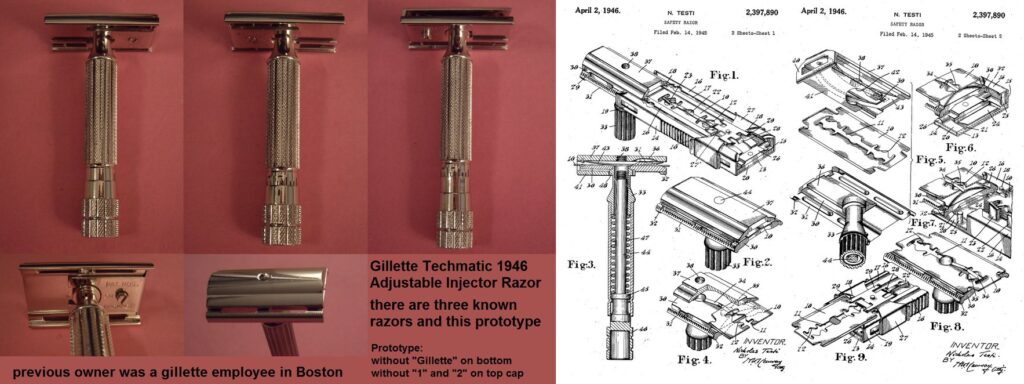We are always discovering „new“ and unknown Gillette razors. It is estimated that there are more than 700 different Gillette shaving sets.

Often, however, Gillette has just put the same razor in different packaging and sold it under a different name.
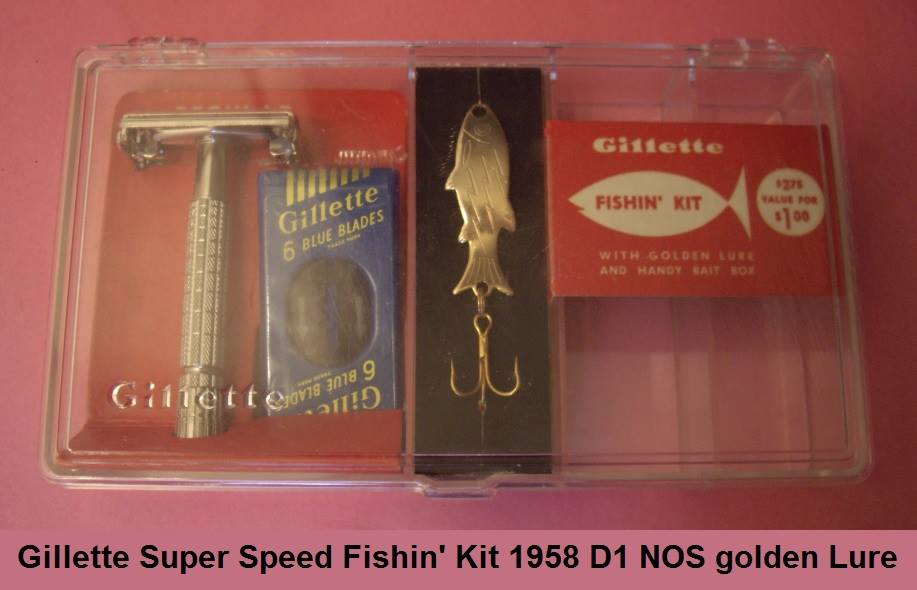
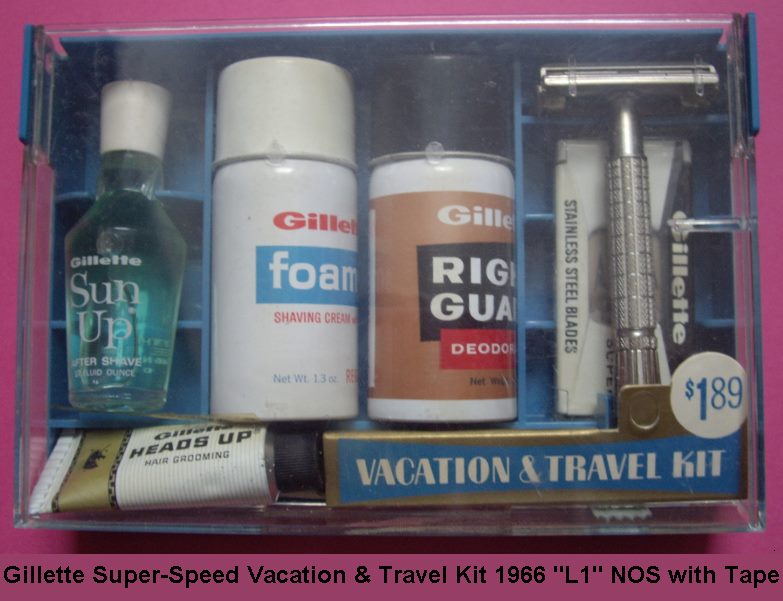
Gillette has sold its razors all over the world and registered patents.
Through cooperation with other companies, Gillette has produced razors not only in gold, silver and rhodium, but also in nickel, for example. Gillette has also sold razors in solid 14kt and 18kt gold and sterling silver. There are also a few boxes in ivory.

Old Type Series
- Introduction and Time Period: The Old Type series was introduced in 1903 as Gillette’s first safety razor design, launching the modern era of shaving. This model was produced into the early 1930s and established the double-edged (DE) blade system with disposable blades, a major innovation in shaving technology at the time.
- Design: The Old Type razors featured a three-piece design with an open comb. The head was flat, allowing for a very direct shave, which could be slightly aggressive for some users. The open comb design allowed stubble to pass directly to the blade, making it effective on thicker or coarser facial hair. The three-piece setup required users to unscrew the handle and separate the base and top plate to change blades.
- Popular Models: Early Old Type models typically had a thin, ball-end handle. Notable versions included the Single Ring and Double Ring, which referred to the number of ring decorations on the handle’s base.
- Materials and Finishes: Most Old Type razors were made of brass, with finishes in nickel, silver, or gold plating for upscale variants. Over time, the series saw slight adjustments in design, including thicker handles to improve balance.
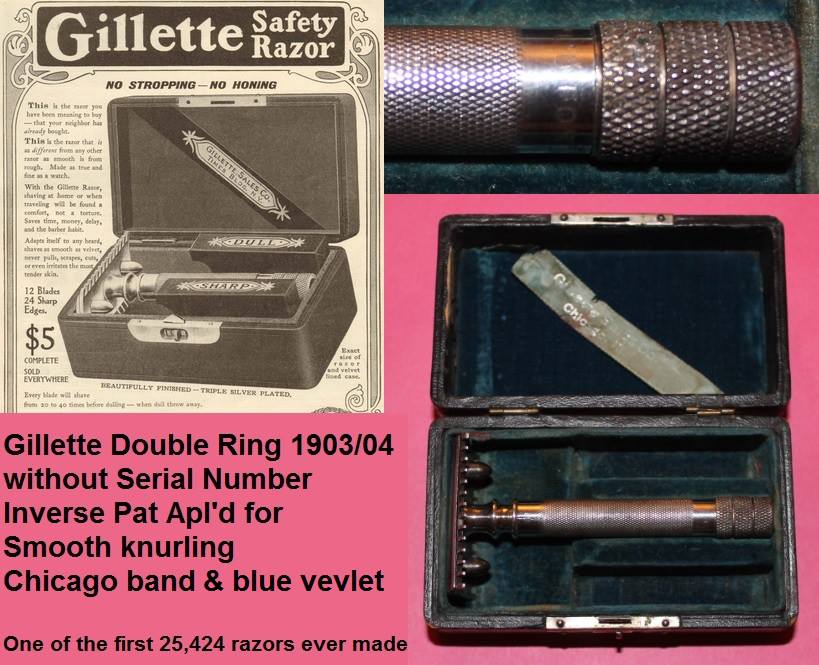
New Type Series
- Introduction and Time Period: The New Type series was launched in 1930 to improve upon the original Old Type. It was produced through the early 1940s, during which Gillette made significant refinements to enhance the user experience.
- Design: Like the Old Type, the New Type also had an open comb, but the head was slightly curved rather than flat. This curvature made for a gentler shave, as it reduced the aggressiveness of the blade angle, while still allowing for a close, efficient shave. It retained the three-piece construction, with the handle unscrewing to separate the base plate and top cap for blade changes.
- Popular Models: The New Type line included models like the New Improved and New Standard, which were slightly different in weight and blade exposure. The New Deluxe variant, for example, had a heavier handle and was often gold-plated, appealing to users wanting a more luxurious shaving experience.
- Materials and Finishes: These razors were also brass with nickel or gold and silver plating, and some special sets were crafted with intricate designs and high-quality finishes.
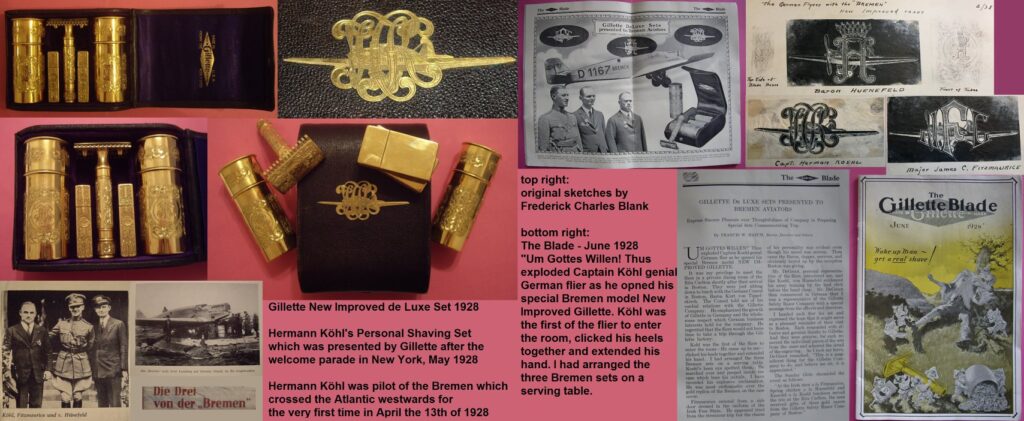
Goodwill Series
Introduction and Time Period: The Goodwill Series was introduced in 1931 as a promotional line, aiming to maintain customer loyalty during the Great Depression. Gillette designed these razors to use the same double-edged blades as previous models, but they were marketed at a lower price to encourage continued use of Gillette blades.
Design: The Goodwill razors featured an open-comb design and were mostly produced as three-piece models. What set them apart was their unique top cap, which had “studs” instead of complete slots, meaning they could only work with blades that had corresponding slots—a way for Gillette to encourage blade sales. The razors were mild and forgiving, ideal for everyday shaving.
Popular Models: The series included several variations, such as the Goodwill #160 and Goodwill #164, each with slight differences in the handle and comb style. Some versions had ornate designs on the top cap or handle, making them visually distinctive.
Materials and Finishes: The Goodwill razors were typically made of brass and offered in nickel or silver plating. Some special editions were gold-plated, lending an elegant touch to this otherwise budget-friendly line.
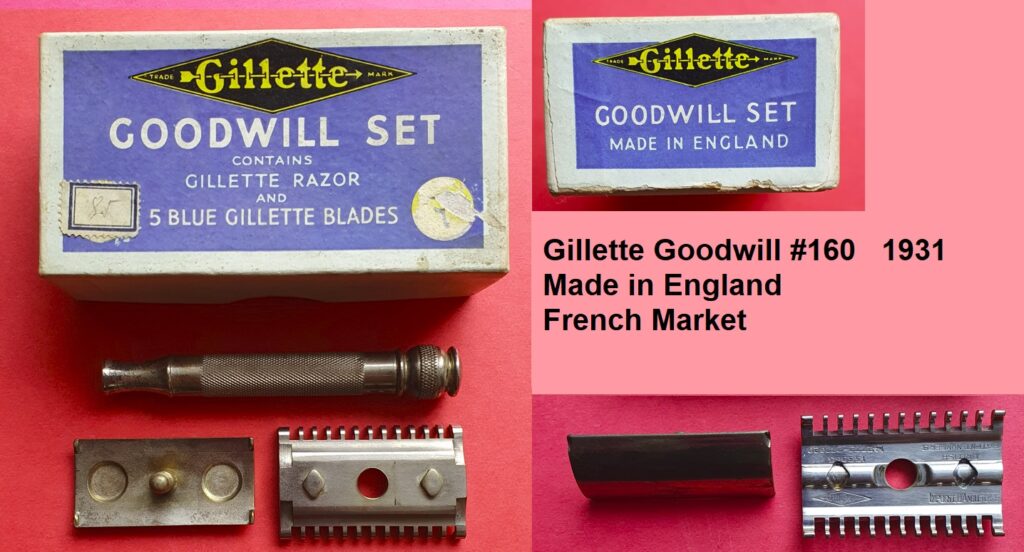
Tech Series
- Introduction and Time Period: The Tech series was introduced in 1938 and was produced continuously until the 1970s. It marked a shift in design philosophy by using a closed comb, making it one of the gentlest and most user-friendly razors for daily shaving.
- Design: The Tech razors introduced a closed comb guard and a flat head design, which provided a mild and forgiving shave. Its three-piece design made it easy to disassemble for blade changes, but with a new focus on comfort and ease, ideal for beginners and daily use.
- Popular Models: Variants included the Fat Handle Tech, which had a thicker, rounded handle, and the Ball End Tech, which featured a narrower handle with a ball-end knob. Each variant offered a slightly different balance and feel, though the head design remained consistent.
- Materials and Finishes: Tech razors were made from brass or aluminum and came with nickel or chrome plating, with some special editions in gold. Lightweight aluminum handles became more common after World War II, especially for military kits.
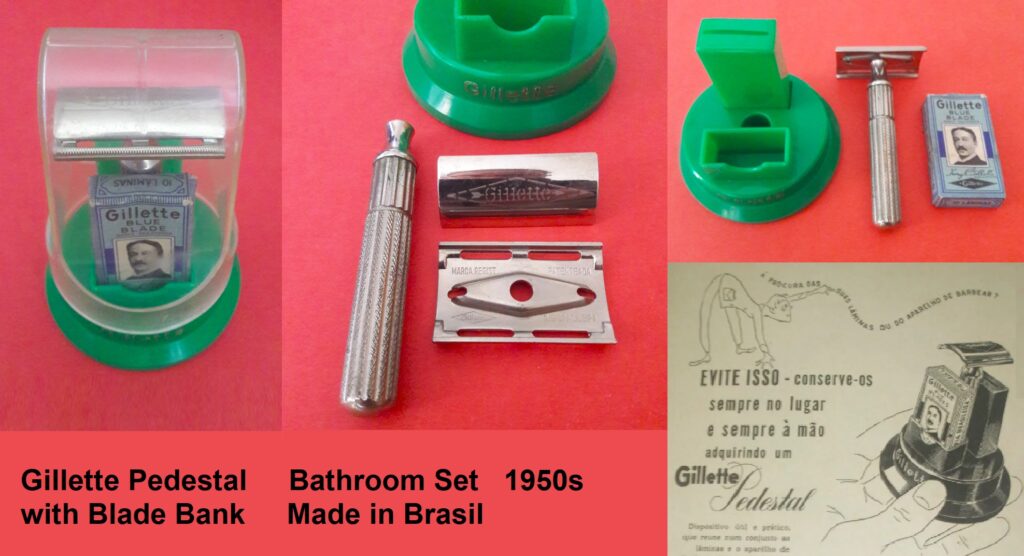
Open Comb Twist to Open (TTO) Series
- Introduction and Time Period: The Open Comb Twist to Open series began in the 1930s, adding the convenience of the Twist to Open (TTO) mechanism to an open-comb razor design. This combined the efficiency of an open comb with the quick blade-changing mechanism that became popular in this era.
- Design: These razors had an open comb for an aggressive shave that was efficient in handling dense or coarse hair. The TTO (or “butterfly”) mechanism allowed users to twist the handle to open the razor head and change the blade easily. This feature was a major selling point for its convenience and user-friendliness.
- Popular Models: Well-known models included the Gillette Aristocrat Open Comb TTO, which was often gold-plated and seen as a premium model, and the Sheraton and Senator models, which were popular for their elegant design and effective shave.
- Materials and Finishes: These models were generally brass, finished in high-quality nickel or gold and rhodium plating. The Aristocrat in particular had more luxurious finishes and design details, making it an upscale option.
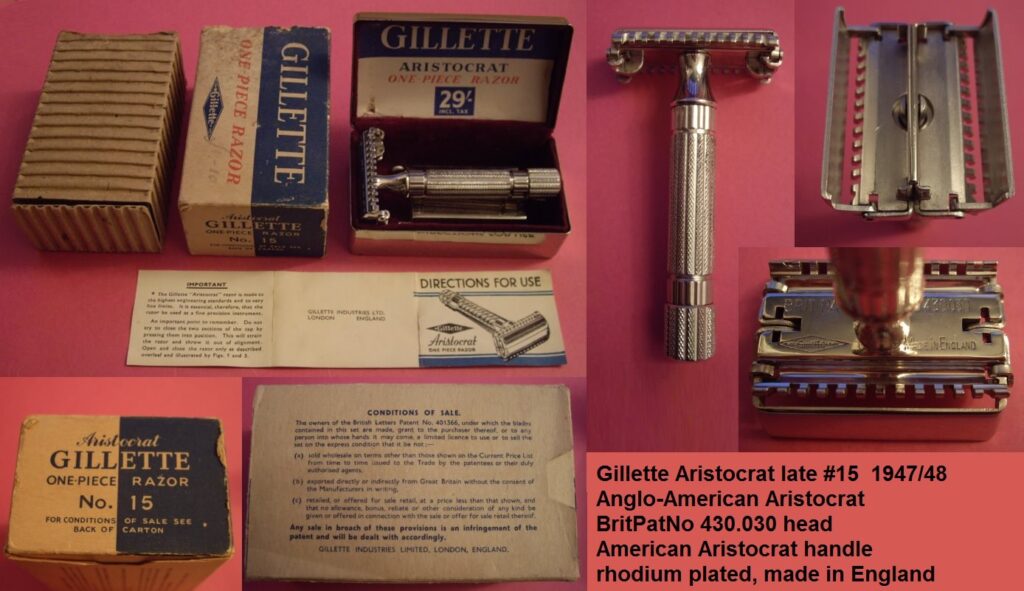
Closed Comb Twist to Open (One-Piece) Series
- Introduction and Time Period: The Closed Comb Twist to Open (TTO) series was introduced in the late 1930s and became one of Gillette’s most popular lines. It was designed to offer a comfortable, mild shave and an easy-to-use blade-changing mechanism.
- Design: These razors featured a closed comb, which provided a gentler shave than open-comb designs, ideal for daily use. The TTO “butterfly” opening mechanism allowed users to twist the handle to open the head for quick and easy blade changes without disassembly, enhancing convenience and safety.
- Popular Models: The Gillette Super Speed was one of the most iconic models, available in Blue Tip (milder shave), Red Tip (more aggressive shave), and Flare Tip (standard). Other popular models included the Gillette Aristocrat Closed Comb TTO, a luxurious gold-plated variant, and the Gillette Rocket, which was slightly heavier and known for its durability, primarily sold in Europe.
- Materials and Finishes: Most models were crafted from brass with nickel or chrome plating. Premium versions, like the Aristocrat, were often gold- or rhodium-plated. Each model had unique handle designs, from knurled patterns for better grip to distinct tips indicating aggressiveness.

Adjustable Series
- Introduction and Time Period: The Adjustable Series was introduced in the late 1950s and became a groundbreaking line for Gillette, allowing users to customize their shave with an adjustable dial. It offered a new level of versatility in shaving by enabling users to modify the blade exposure based on their skin type and beard density.
- Design: These razors featured a twist-to-open (TTO) mechanism for easy blade changes. The adjustment dial, typically located at the base of the handle, allowed users to select from nine different settings, providing a range from mild to aggressive shaves. This adaptability made the razors suitable for various shaving preferences and skin sensitivities.
- Popular Models: Notable models include the Gillette 195 Adjustable (commonly known as the Fatboy), which was produced from 1958 to 1961; the Gillette Slim Adjustable, manufactured from 1961 to 1968; and the Gillette Black Beauty (Super Adjustable), produced from 1969 to the early 1980s. Each model had distinct features and appeal, contributing to its popularity.
- Materials and Finishes: Most models in the Adjustable Series were constructed from brass with nickel plating, providing durability and a quality feel. The Fatboy and Slim often featured a polished chrome finish, while the Black Beauty had a distinctive black anodized aluminum handle. Some models were available in luxurious gold plating.
